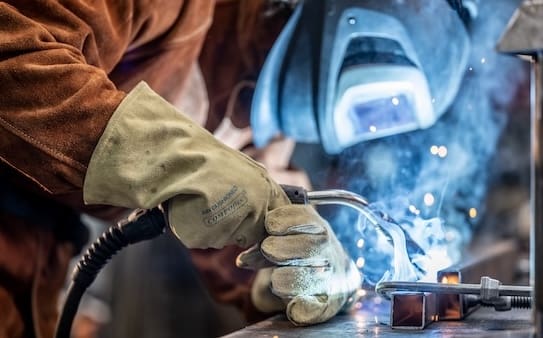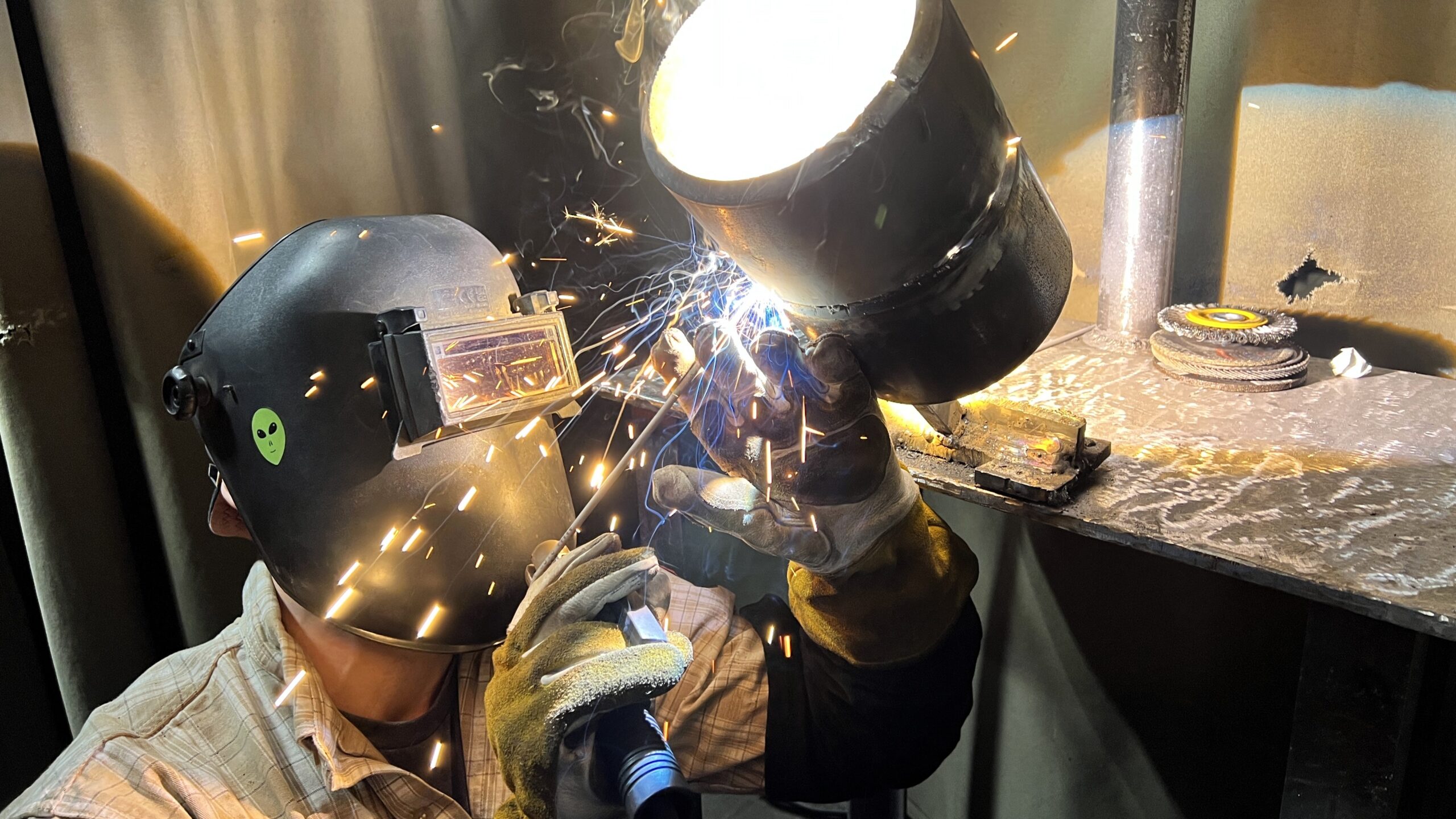Common Welding Fixing Issues and Just How to Address Them Successfully
Welding repairs usually encounter a variety of problems that can endanger the integrity of the end product. Common issues include inadequate penetration, porosity, and misalignment, to name a few. Each problem presents special obstacles that require particular methods for resolution. Comprehending these issues is crucial for welders aiming to improve their abilities and end results. This conversation will check out these common welding fixing issues and efficient methods to resolve them.
Inadequate Infiltration
Poor penetration occurs when the weld metal falls short to totally fuse with the base material, leading to weak joints and prospective structural failings. This issue often comes from insufficient warm input, inaccurate electrode angle, or improper welding speed. Welders might encounter poor infiltration as a result of a mistake of the essential criteria for a details material density or kind. In addition, contamination on the base material's surface area can hinder effective bonding, aggravating the problem. To resolve poor infiltration, welders ought to guarantee proper setups on their tools and keep a tidy work surface area. Regular inspection of welds is recommended to determine any kind of deficiencies early, permitting prompt modifications and the prevention of compromised architectural honesty in welded settings up.
Porosity
Porosity is a common issue in bonded joints that materializes as little gas bubbles caught within the weld metal. This flaw can endanger the honesty of the weld, bring about minimized stamina and possible failure under stress. Montana Mobile Welding and Repair Belgrade Fabrication. Porosity typically emerges from contamination, moisture, or incorrect welding techniques, which allow gases to escape right into the molten weld pool. To deal with porosity, welders must ensure appropriate surface area prep work, keep a clean working setting, and utilize ideal welding specifications. In addition, choosing the appropriate filler product and shielding gas can minimize gas entrapment. Normal inspection and screening of welds can help identify porosity early, guaranteeing timely rehabilitative actions are taken, thus preserving the top quality and integrity of the welded structure
Imbalance
Imbalance in welding can occur from different aspects, consisting of improper setup and thermal expansion. Understanding the source is essential for efficient resolution. Numerous improvement methods are readily available to straighten components and guarantee architectural honesty.
Sources of Misalignment
Welding misalignment commonly stems from a variety of underlying concerns that can jeopardize architectural stability. One main reason is incorrect fit-up of components before welding, which can lead to spaces and uneven surface areas. Variants in thermal expansion throughout the welding procedure can additionally lead to distortion, especially if the materials being joined have various coefficients of expansion. In addition, poor fixturing and securing may stop working to hold parts firmly in place, causing movement during welding. Inadequately maintained devices, consisting of welding devices and devices, might introduce inconsistencies in the weld bead, additional adding to misalignment. Ultimately, operator mistake, coming from insufficient training or experience, can also play a substantial function in developing misaligned welds.
Modification Methods Available
Attending to imbalance effectively requires a mix of rehabilitative methods tailored to the particular problems at hand. One typical technique is making use of fixtures or jigs to hold parts in the proper setting during welding, making sure constant positioning. Additionally, pre-heating the materials can aid decrease distortion and boost fit-up. For significant imbalance, mechanical realignment strategies, such as making use of hydraulic jacks or clamps, can be utilized to correct the position prior to welding. Post-weld warmth therapy might likewise be necessary to alleviate tensions brought on by misalignment. Ultimately, cautious inspection and adjustment during the setup phase can stop misalignment concerns from coming to be substantial issues, advertising a smoother welding process and boosting overall structural honesty.
Distortion
Distortion is a common obstacle in welding that can arise from numerous factors, including unequal home heating and cooling. Understanding the sources of distortion is vital for implementing efficient prevention methods. Resolving this issue not only boosts architectural integrity however also boosts the total high quality of the weld.
Root causes of Distortion
When subjected to the extreme heat of welding, materials often undergo changes that can bring about distortion. This sensation mainly develops from thermal expansion and tightening throughout the welding process. As the weld area warms up, the product expands; upon cooling, it contracts, which can develop internal tensions. Furthermore, uneven heating throughout a work surface can exacerbate these anxieties, causing warping or flexing. The sort of material likewise plays a considerable function; steels with varying thermal conductivity and coefficients of development may react in a different way, resulting in unforeseeable distortions. Additionally, inadequate joint style and poor fixturing can contribute to imbalance during welding, enhancing the possibility of distortion. Recognizing these reasons is crucial for efficient welding fixing and avoidance methods.
Avoidance Techniques
Effective avoidance strategies for distortion during welding emphasis on controlling heat input and ensuring proper joint layout. Maintaining a consistent heat input aids to decrease thermal expansion and contraction, which can result in distortion. Making use of techniques such as preheating the workpiece can additionally decrease the temperature gradient, advertising consistent home heating. Furthermore, picking appropriate joint layouts, such as T-joints or lap joints, can boost stability and decrease stress and anxiety concentrations. Implementing correct fixturing to protect the workpieces in location additionally aids in keeping placement during the welding procedure. Staggered welding series can disperse warm more evenly, preventing localized distortion. By applying these iti welder methods, welders can considerably reduce the probability of distortion and boost the general top quality of their welds.
Breaking
Cracking is a common issue encountered in welding repairs, commonly resulting from different variables such as incorrect cooling rates, product choice, or inadequate joint prep work. The event of fractures can considerably compromise the honesty of the weld, causing prospective failings throughout operation. To address this issue, welders need to initially examine the source, making certain that products are suitable and suitably chosen for the details application. Additionally, regulating the air conditioning rate during the welding procedure is crucial; rapid air conditioning can cause stress and anxiety and cause fracturing. Appropriate joint design and preparation also add to minimizing the threat. Executing these techniques can improve weld quality and longevity, ultimately minimizing the likelihood of splitting in finished weldments.

Incomplete Blend
A substantial problem in welding repair work is insufficient combination, which takes place when the weld steel does not properly bond with the base product or previous weld passes - Montana Mobile Welding and Repair Fabrication. This issue can bring about weak points in the joint, possibly compromising the stability of the welded framework. Variables contributing to incomplete fusion consist of inadequate heat input, incorrect welding strategy, and contamination of the surfaces being joined. To address this issue properly, welders need to guarantee proper pre-weld cleansing and surface prep work, along with change their welding criteria to attain sufficient penetration and fusion. Normal examination during the welding procedure can also assist identify incomplete fusion early, enabling for prompt corrective actions to enhance the total top quality of the weld
Overheating
While welding repair services can improve architectural honesty, overheating presents a substantial obstacle that can lead to product degradation. Too much heat during welding can change the mechanical residential or commercial properties of steels, leading to minimized strength, raised brittleness, and warping. This phenomenon is especially important in high-stress applications discover here where structural integrity is vital. Identifying getting too hot can involve visual evaluations for staining or distortion, in addition to keeping track of temperature level throughout the welding process. To minimize the threats connected with overheating, welders ought to utilize suitable methods, such as regulating warm input, adjusting traveling rate, and utilizing appropriate filler materials. Additionally, executing pre- and post-weld heat therapies can aid bring back product buildings and boost the total quality of the repair service, making sure long-term efficiency and security.
Frequently Asked Inquiries
What Are the Typical Signs of a Welding Defect?

Just How Can I Check My Welds for Top quality?
To examine welds for quality, one can use aesthetic inspections, ultrasonic testing, and radiographic techniques. Each method guarantees structural integrity, determines issues, and confirms adherence to specified standards, ultimately improving the dependability of the bonded joints.
What Safety Precautions Should I Take While Welding?
When welding, one ought to focus on security by wearing suitable personal safety devices, making certain proper ventilation, safeguarding flammable products away, maintaining a tidy office, wood welding and knowing environments to avoid injuries and mishaps.
Can I Repair a Weld Without Redoing the Entire Joint?
Repairing a weld without renovating the whole joint is feasible, depending upon the damages (Fabrication). Strategies such as grinding, including filler material, or using a welding procedure can effectively resolve certain flaws while protecting the surrounding structure
What Tools Are Vital for Efficient Welding Repairs?
Essential tools for effective welding fixings consist of a welding device, cable brush, grinder, safety gear, clamps, and filler materials. Each tool plays an important duty in guaranteeing top quality and safety throughout the repair service process. Porosity generally occurs from contamination, wetness, or improper welding techniques, which allow gases to run away right into the molten weld pool. Poorly maintained devices, consisting of welding machines and devices, might introduce disparities in the weld bead, more adding to misalignment. When subjected to the extreme heat of welding, materials usually go through modifications that can lead to distortion. Splitting is an usual problem encountered in welding repair services, typically resulting from various factors such as inappropriate air conditioning rates, material selection, or insufficient joint preparation. A significant issue in welding repair services is incomplete combination, which happens when the weld steel does not effectively bond with the base product or previous weld passes.
Comments on “Common causes of weld misalignment and Belgrade Fabrication’s solutions”